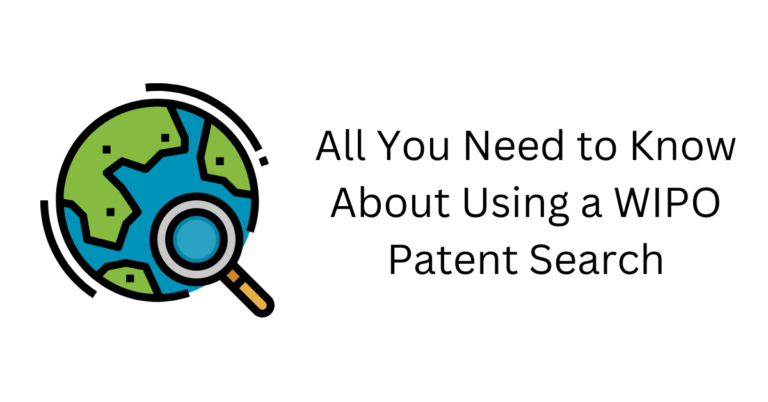An innovation or invention is granted an exclusive right known as a patent. All relevant information about the invention must be included in the patent application. Theoretically, the patent holder has the sole right to prohibit or exclude others from using the idea for financial gain. This is the reason that before applying for a patent it is advisable to conduct a patent search for checking whether the same idea is patented in any other country. The World Intellectual Property rights Organisation (WIPO) was established by UNO comprising 193 nations. WIPO’s goal is to create an equitable and open international intellectual property (IP) system that promotes innovation, rewards creativity, and aid in economic growth. WIPO provides a patent search platform known as “Patentscope”, which facilitates searching different patents.
Table of Contents
ToggleSteps of Conducting Patent Search In PatentScope
Let us understand the steps in the form of the following example.
Suppose an individual has developed a method for printing solar cells onto aluminum foil at a low temperature using a nanoparticle ink.
Step 1 Identifying central concepts related to the innovation
From the description, central concepts can be: “solar cell” (product), “aluminum foil”, “nanoparticle ink” (used for production).
Step 2 Determining keywords for the search
Finding synonyms and related keywords and phrases will be next step for the concepts identified in the first step. With current scenario following synonym or alternate terminologies can be used i.e. solar cell photovoltaic cell (synonym) nanoparticle suspension (related term) aluminum foil aluminium foil (alternative spelling), metal foil (related term) nanoparticle ink nanoparticle solution (related term),
Step 3 Determine IPC symbols for the search
The pertinent IPC symbols can be identified using some of the words and synonyms found in the previous steps by using the IPC Official Publication (see: www.wipo.int/ipcpub). With respect to current example, searching for the term “solar cell” using the predefined settings yields the IPC group H01L 31/00 as a relevant IPC symbol.
Step 4 Performing first search
It is advisable to keep the first search relatively broad, using (i) the “OR” Boolean operator along with keywords and IPC symbols; and (ii) a wildcard operator to include plural forms of words and phrases. The “International Class” (“IC”) can be used in PATENTSCOPE for restricting the search for IPC symbols. The first search focuses on finding a broad range of patent applications related to the product in question i.e. IC/H01L31/00 OR “solar cell” OR “photovoltaic cell”. This search yields more than 250000 results. Examining the results reveal that they include applications covering not only methods for producing solar cells but also for arranging and using solar cells.
Step 5 Use of Boolean Operators
Considering the results from the primary search, the search should be conducted using more specific search terms along with the “AND” Boolean operator. In order to capture results containing wordings such as “nanoparticle solution” as well as “solution containing nanoparticles,” “NEAR” operator can also be used in order to define the distance between 2 words. For example: (IC/H01L31/00 OR “solar cell” OR “photovoltaic cell”) AND ((aluminum NEAR foil) OR (aluminium NEAR foil) OR (metal NEAR foil)) AND ((nanoparticle NEAR suspension) OR (nanoparticle* NEAR solution) OR (nanoparticle* NEAR ink))
Different Factor’s For Conducting Patent Search In Patentscope
Following are the different factors which can be used to find relevant patents:
• Keywords
• Patent classification
• Dates (e.g., priority date, application date, publication date, grant date)
• Patent reference/identification numbers (patent number, publication number, application number)
• Names of applicants/assignees or inventors
Features of Patentscope
Patenscope provides access to millions of patents/patent applications, including, Regional and national patent databases out of several signatory nations and International Patent Applications submitted under the PCT. Following are the methods to conduct patent search in Patentscope:
1. Simple search
The standard WIPO patent search interface is “Simple Search interface”. Individuals/inventors having minimal training or new to patent searches can use it. Following are few possible applications of the Simple Search Interface:
- A subject covered using definitive terms, or a relatively precise notion to restrict the number of results
- A particular figure: a mention of a patent document in the news, during a court case, etc.
- A person, an innovator, a candidate, etc.
- A business, whether out of personal interest, to merge with or acquire another business or monitor a rival’s efforts.
- A particular period
Following are the 8 preconfigured search areas accessible in the simple search interface, each with different search criteria:
- Front Page: Only the document’s front page will be searched using the search keywords entered on this page.
- Any field: Using the search criteria provided in this form, any field in the document is searched.
- Full text: Enter your search term here if you’re interested in a full-text search.
- English text: Records with English text will be looked for using the criteria listed below.
- ID/Number: You can include your publication or filing number here.
- International Patent Code: In this field, enter any IPC.
- Names: List the applicant’s, creator’s, company’s, etc., names.
- Dates: Enter any dates you choose
- Advanced search – Individuals with appropriate experience and expertise in patent searches can use advanced search interface. Using an infinite number of words, this interface may be used to generate sophisticated search queries.
The interface provides a plurality of field codes and operators, such as Boolean operators, proximity operators, and range operators, which can be used to combine search keywords. An individual/inventor can alter the output of these operators to get specific outcomes. Further, it also enables individual/inventor to search for variations in phrases based on a similar stem or root by using wildcard operators. Patentscope recommends synonyms, which is the new function in the advanced search, “Expand the query,” assists users in broadening the search.
2. Filed Combination Interface
The field combination interface is important search interface for finding and analysing information about patents in the WIPO Patent search database. Individuals/inventors can organize the search precisely by using specific search terms/parameters in each of the search boxes on this interface. The interface provides a list of pre-set search fields that may be combined based on the users’ requirements. The following example steps illustrate how the Field Combination interface is used:
- Selecting the field/fields of interest using the drop-down menu’s arrow;
- Using the OR/AND boxes to add or include fields;
- The individual/inventors can add or remove fields by clicking on them;
- Selecting the language the individual/inventors want to search in 11 language options available;
- Selecting the collection of interest using the Add button.
3. Chemical Structure Search
The chemical structure search makes it feasible for individuals looking for chemical compounds to recognize molecules that comprise the desired fragment. Only whole structures could be searched till recent years. A new feature i.e. substructure search has been included, which enables individuals/inventors to enter a sketched sub-structure and search for all entries in the Patentscope. This search helps in creation of breakthrough technology and medications.
Following are the 3 options available in the Chemical structure search:
- Convert Structure: With this function, individuals/inventors can select the type of search input they want to utilize, for example- a brand name or a chemical constituent.
- Structure editor: This feature allows the individuals/inventors to alter a particular search.
- Submitting a Structure: This feature allows individuals/inventors to submit relevant documents which provide chemical descriptions.
Cross-Lingual Expansion Search
Cross-Lingual Information Retrieval (CLIR) tool enables individuals/inventors to broaden their search. Before translating content into 13 different languages, the search tool analyses synonyms for the user’s search terms. An individual/inventor must enter search terms in one of those languages into the search box to access the system’s translation and recommendation functions. This enables the individuals/inventors to get the patents published in each of the 13 languages.
Conclusion
WIPO patent search tool i.e. Patentscope provides that patent information which is accessible to the public to analyse novelty of the invention. The search conducted in Patentscope is utilized to analyse all forms of prior arts in existence and other available materials. The individuals or organizations benefit from this patent searches because they can estimate the worth of possible investments in patents. Hence the Patenscope platform provided by WIPO facilitate individuals through simple search engine and easy steps to ensure whether their ideas are novel. The regular updates in the Patenscope database makes the patent search process more convenient and feasible internationally.






